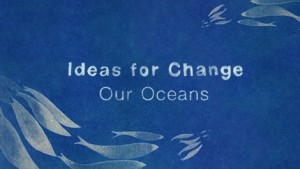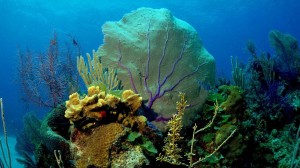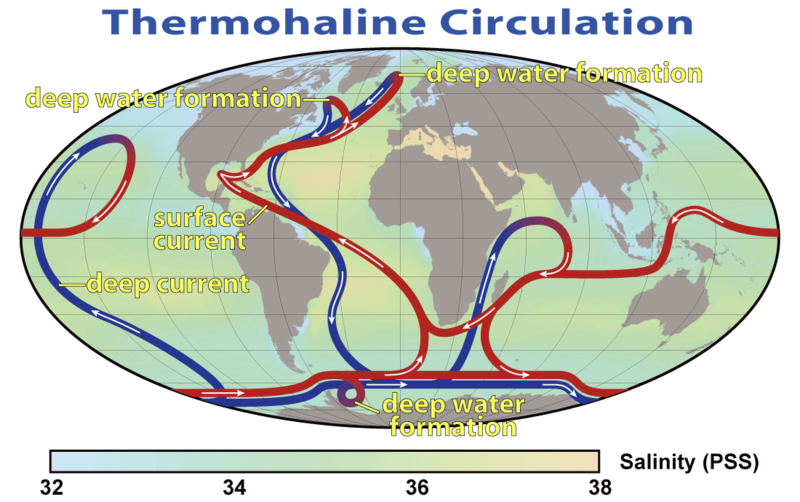Search Results for Tag: ocean
Make a promise, help save the oceans
 What can you promise yourself that will in some way help protect the world’s oceans? That’s the question today, on World Oceans Day. It’s an event meant to honor what is one of the world’s main protein sources – the oceans. We definitely need to save our ‘blue gold’. In 2011 alone, 131 million tons of fish ended up on dinner plates worldwide.
What can you promise yourself that will in some way help protect the world’s oceans? That’s the question today, on World Oceans Day. It’s an event meant to honor what is one of the world’s main protein sources – the oceans. We definitely need to save our ‘blue gold’. In 2011 alone, 131 million tons of fish ended up on dinner plates worldwide.
To celebrate this year’s event, the World Economic Forum (WEF) has released a short animated film narrated by American oceanographer Sylvia Earle. “The world is blue,“ she says. The message is clear – all of us need to take better care of the world’s oceans and stop using them as dumping grounds for garbage. We also need to stop overfishing them and drilling into the ocean floor in the hunt for oil.
If you want to get a glimpse at what the future of the world’s oceans might look like, the WEF has also released an infographic. It’s definitely worth a click.
World Oceans Day had been unofficially celebrated since 1992 and was officially recognized by the United Nations in 2008. Ever since, the day has a special theme each year. This year, the event’s organizers want you to make a promise to change one thing in your lives that will help protect the ocean. The idea is to upload a photo of the promise to social media plattforms – make sure you mention #WorldOceansDay.
Is the ocean to quit it’s job?
Silently and mostly unrecognized, ocean is doing a yet quiet good job for the climate: it absorbs CO2 from the atmosphere and dumps it into the deep. That is one of the reasons, why climate did not further heat up within the last decade – although world keeps emitting lots of CO2.
But now researchers found that the Atlantic ocean absorbs less CO2 than usually – and also figured out the reason for this. It’s because the so called “meridional overturning circulation” slows down. Before you now think “I’ll never get this” – hang on. Sounds more complicated than it actually is.
The overturning circulation works like this: In the Atlantic ocean, water flows northwards – from the warmer Southern part into the colder Northern part. There, the water cools down, becomes saltier and sinks into the deep. There this so called deepwater flows back towards the South, warms up there and is welling up in consequence. Back at the surface in the Southern hemisphere it is, where ocean water takes up the antropogenic CO2.
Now, due to global warming, also ocean surface water – even in the Northern usually colder part of the Atlantic – warms up – and does not sink to the deep. This in turn slows down the overturning circulation. In consequence of this slowing, CO2-saturated water is not dumped into the deep as usual, but stays rather close to the surface. In consequence, less CO2 can be taken up from the atmosphere.
So the research team scientifically proved that we actually are destroying those natural systems that normally help keeping CO2 levels low – by emitting more and more CO2 and warming up the planet with its ocean.
Limy stars to save coastlines in a warming world
Remember our Facebook-series on animals threatened by climate change? Here is some good news: There are also a few species that benefit from climate change. One of these is a special kind of protozoa – so called Foraminifera. Not only that, the fact they are thriving on a warmer climate also benefits humans and the planet as a whole.
There are about 10.000 different species of Foraminifera, all of them covered with a lime shell. They live mainly along the coastlines of Somalia, Kenia, Tansania, Mosambique, South Africa, Namibia and Angola. Though some of them are really tiny – even smaller than a sand grain – they perform enormous tasks: “Foraminifera are ecosystem engineers,” says Martin Langer, Professor at the the Steinmann-Institut for geology, mineralogy and paleontology at the University of Bonn. “With their shells, these protozoa produce up to two kilograms of calcium carbonate per square meter of ocean floor. This often makes them – after corals – the most important producers of sediment in tropical reef areas.”
Foraminifera to replace corals
This becomes important in a warming world. Corals have trouble handling warmer and more acidic oceans: their skeletons dissolve, corals die. And with disappears the habitat they provide for small fish and other aquatic species. What’s more, as whole reefs disintegrate they can no longer stabilize and protect coastlines from flooding.
This is where the Foraminifera come in: It’s not only that more acidic oceans won’t harm their skeletons. They thrive on warm water of at least 14 degrees celsius. Plus, warmer water temperatures make them spread, the research team around Martin Langer now found out: If ocean temperatures rise by about 2.5 degrees Celsius on average until 2100, Foraminifera are predicted to expand their habitat by almost 300 kilometres in latitude towards the poles.

Fossil remnants of giant Foraminifera from South Germany: Prolific producers of carbonate from the past. (C) Martin Langer/Uni Bonn
Hope from the past
Researchers hope Foraminifera might take over the protection task of corals by stabilizing coastlines with their limy skeletons. This hope is at least supported by history, says Langer: “The fossil record shows that whenever during the history of Earth the carbon dioxide content of the atmosphere was considerably higher and the oceans were clearly warmer, foraminifera were among the most frequently occurring carbonate producers in tropical oceans.”
Into the sea, you and me – Biodiversity Day 2012 focuses on marine life
 What’s going on under the surface of the sea? That’s what this years International Day for Biological Diversity, or the Biodiversity Day, is about. So the question today is: “How Much Life Is in the Sea?” Over the last decade scientists from around the world tryed to answer that question. The project was huge! The effort involved 2,700 scientists from over 80 nations, who participated in 540 expeditions around the world. They studied seawater and probed the deepest, darkest depths of the ocean, they sailed tropical seas and explored the arctic ice. And the scientists were successfull – after the trip they added 1,200 species to the known roster of life in the sea. And there’s no end to it in sight; scientists are still working through another 5,000 specimens to determine whether they are also newly-discovered species. You ask for the number of known marine species? Well, of course it’s increased to now around 250,000. In its final report, the Census team suggested it could be at least a million. Some think the figure could be twice as high.
What’s going on under the surface of the sea? That’s what this years International Day for Biological Diversity, or the Biodiversity Day, is about. So the question today is: “How Much Life Is in the Sea?” Over the last decade scientists from around the world tryed to answer that question. The project was huge! The effort involved 2,700 scientists from over 80 nations, who participated in 540 expeditions around the world. They studied seawater and probed the deepest, darkest depths of the ocean, they sailed tropical seas and explored the arctic ice. And the scientists were successfull – after the trip they added 1,200 species to the known roster of life in the sea. And there’s no end to it in sight; scientists are still working through another 5,000 specimens to determine whether they are also newly-discovered species. You ask for the number of known marine species? Well, of course it’s increased to now around 250,000. In its final report, the Census team suggested it could be at least a million. Some think the figure could be twice as high.
Beauty and Destruction lie close together
The video was uploaded to youtube by bittusahgal – it has amazing pictures and delivers a very strong message. The film is described as a ‘non-commercial attempt to highlight the fact that world leaders, irresponsible corporates and mindless ‘consumers’ are combining to destroy life on earth.’ All you have to do is watching and think. There’s a lot possible to keep those beautiful pictures. The cut was compiled by the Sanctuary Asia network.










Feedback